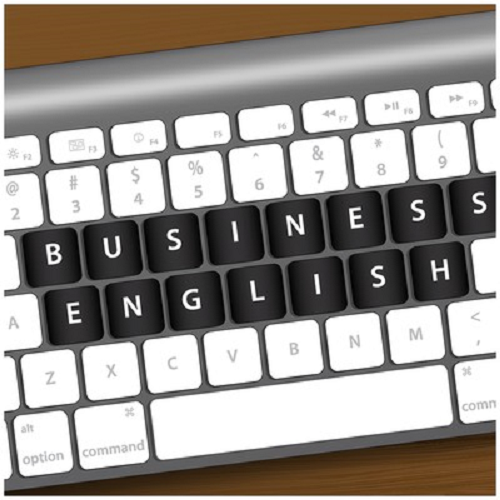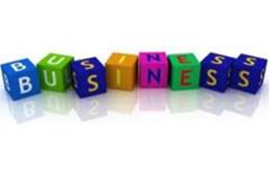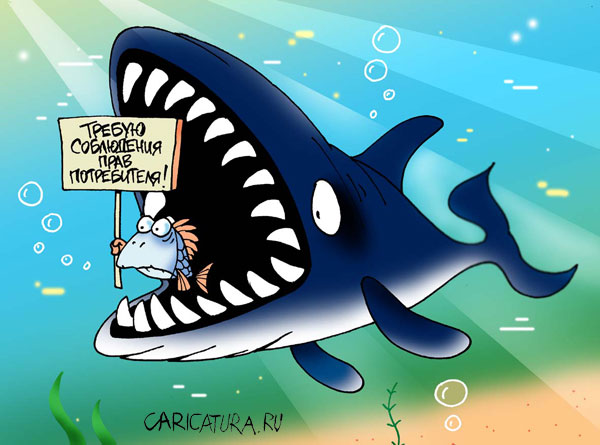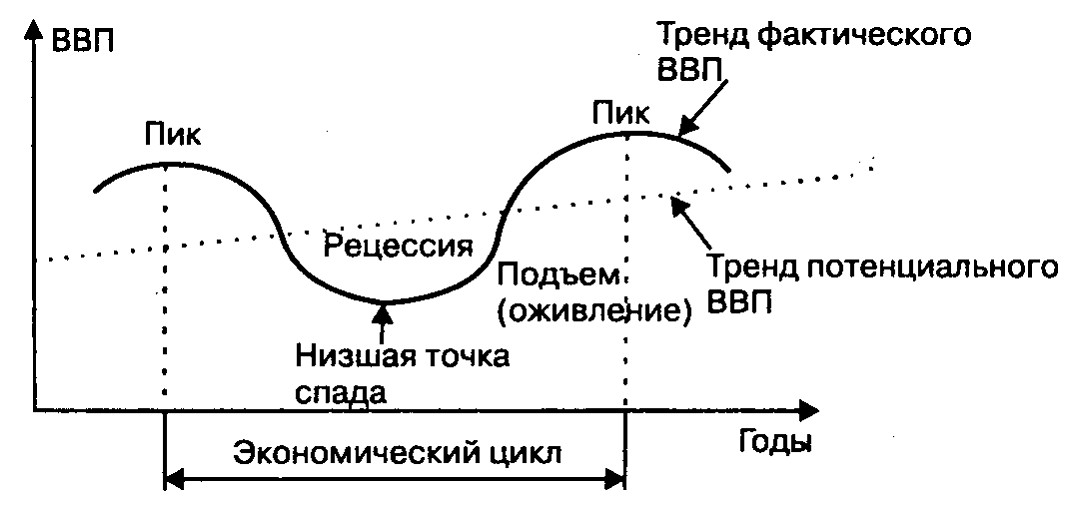- Преподавателю
- Иностранные языки
- Учебное пособие Введение в деловой английский, предназначенное для студентов 1-2-курсов колледжей
Учебное пособие Введение в деловой английский, предназначенное для студентов 1-2-курсов колледжей
| Раздел | Иностранные языки |
| Класс | - |
| Тип | Другие методич. материалы |
| Автор | Фоменко Е.А. |
| Дата | 13.10.2015 |
| Формат | doc |
| Изображения | Есть |
 Государственное бюджетное профессиональное образовательное учреждение
Государственное бюджетное профессиональное образовательное учреждение
Краснодарского края
"Краснодарский торгово-экономический колледж"
Фоменко Е.А.
ВВЕДЕНИЕ В ДЕЛОВОЙ АНГЛИЙСКИЙ
Учебное пособие

Краснодар, 2015
Составитель: Фоменко Е.А., преподаватель английского языка ГБПОУ КК «КТЭК»
Рецензенты: Колесникова О.Н., преподаватель английского языка ГБПОУ КК «Краснодарский машиностроительный колледж»
Тавадян А.Ю. преподаватель английского языка ГБПОУ КК "КИТТ"
Настоящее учебное пособие «Введение в деловой английский» предназначено для студентов 2-3 курсов в качестве минимума содержания по данной теме, а также для преподавателей английского языка в качестве основного материала (использование во время учебных занятий, для выполнения домашних заданий) особенно для групп слабо мотивированных на изучение английского языка и тех, кто вынужден начать изучение английского «с нуля». Данное учебное пособие представляет собой 13 текстов по деловому английскому языку с упражнениями после каждого текста.
Утверждено на заседании цикловой методической комиссии гуманитарных и социально-экономических дисциплин
№ ___ от ______________ 2015 г.
Председатель ЦМК _____ И.Г. Дуброва
Содержание
-
Введение
4
-
Текст 1.
6
-
Текст 2.
7
-
What does business do?
7
-
How do you make a profit?
9
-
What Business is better: small Business or big Business?
10
-
Setting up a new business.
11
-
Borrowing money.
12
-
Selling.
13
-
Taxation.
15
-
Customer's and Trader's Rights.
16
-
Supply and demand.
18
-
How does economy develop?
20
-
Economic indicators of the business cycle
22
-
Заключение
25
-
Литература
28
Введение
Настоящее учебное пособие «Введение в деловой английский» предназначено для студентов II-III курсов в качестве основного минимума знаний по данной теме. Пособие состоит из 13 учебных адаптированных текстов, которые направлены на формирование основных языковых компетенций в деловом английском языке.
Целью написания данного учебного пособия послужило решение проблемы изучения делового английского языка. Пытаясь сбалансировать несоответствие количества аудиторных часов по английскому языку с предъявляемыми ФГОС требованиями к знаниям и умениям студентов, сделана попытка поиска путей совершенствования уровня владения деловым английским языком посредством чтения, перевода и ознакомления с лексикой делового английского на элементарном уровне.
Поскольку большая часть предложенного в учебном пособии материала тематически связана с соответствующими разделами учебных комплексов, с ним можно работать параллельно с изучением основного учебника. Вопрос о месте и времени использования этих материалов преподаватель решает сам.
Желательно, чтобы на основе предложенных текстов преподаватель сам мог составить упражнения, которые, базировались бы на лексико-грамматическом материале учебного пособия.
Практическая польза от изучения и применения данного учебного пособия в работе преподавателя английского языка очевидна, поскольку помогает систематизировать и активизировать учебный процесс, вовлекая новые формы и методы работы, облегчает поиск материала, позволяет организовать урок нетривиальным и повышающим мотивацию студентов.
Topic: Introduction to Business English.

PHONETICS
Задания для работы с текстами:
-
Прочитайте тексты 1-3 с правильной английской интонацией. Назовите по буквам все существительные и выпишите из словаря их транскрипцию. Выпишите подчёркнутые слова и словосочетания и переведите их.
Text 1
Business is interesting. It is important. People study marketing. People do business. People work very well. Job is important. Boss is clever. People sell goods and make money. Bank is rich. Business is good. I like business. I study it. I study it very well. I know different business people. Marketing is very important now. People work here and there.
Text 2
Business is money. People buy and sell in shops. People buy and sell different goods. People eat in restaurants and bars. It is business, too. People have different services: in banks, post offices. Services are business, too. People produce different goods. Production is business, too. People do business and make money. Money is important in business. It is important in small business and big business. Small business is popular. People like small business. Big business is business in big companies.
Text 3
WHAT DOES BUSINESS DO?
Business is a difficult thing. It has many important elements: money, tax(es), customers, transport, banks.
Why do people do business?
Why do they like small business?
People do business, provide services, buy and sell goods for a profit. There is no business without a profit. What business is good? All businesses are good. Production of goods is profitable. Different services: for example, at hotels, motels are profitable, too.
Communications are good business, too. For example, telephone and mail services. Financial services, for example, banking and insurance, work very well, too.
So, people do different businesses for a profit. They do what they like to do. For example, many families in America run small businesses now.
It is very popular to be a businessman or a businesswoman. Women like to do business: to run a firm, to be a bank manager, or a shop keeper.
It is a new and very interesting tendency in modern life.

T ext 4
ext 4
HOW DO YOU MAKE A PROFIT?
As we know, there is no business without a profit. But how do we make a profit? Firstly, you must estimate your costs. What are costs? Costs are the money you spend to run the business. Secondly, you must estimate your pricing. The price of goods is the money you want to get for your goods.
In business there are four types of costs: firstly, material costs, secondly, labour costs, thirdly, overheads, and, lastly, your own wages.
Material costs include the money you spend when you buy the materials which you need.
Labour costs include the money you pay to the people who work for you.
Overheads include the money you pay for rent, telephone calls, advertising, travel and so on. Overheads have no direct connection with the product. But they are very important to organize your business.
Your own wages in small business are not the maximum money you get from your business. It is the minimum money from your business which is enough for living.
Text 5
WHAT BUSINESS IS BETTER: SMALL BUSINESS OR BIG BUSINESS?
As we know there are two general types of business: small business on the one hand and big business on the other. Many people think that small business is more interesting than big business. At the same time they think it is more popular than big one. Experience shows that small business is better for the people who own it, and big business is better for the people who work in it. Why is it so? Maybe because in small business labour costs and overheads are less than in big business. So poor people can make more profit. But in big business richer people can spend money on all types of costs and stimulate workers with higher wages. Only experience can help you to understand this difference and to know what you like less. Sometimes the least profitable business may be the most interesting one.
Text 6
SETTING UP A NEW BUSINESS.
To set up a new business you have to solve a number of problems. For example, where do you get your supplies from? What is the price you pay for them? What promises do you work from? What type of control do you want to keep in your business? All this depend on the type of your work, because you may work as a sole trader, a partnership or a limited company.
To work as a sole trader means that you are personally responsible for the business and take all profit after paying income taxes. But you remember one thing: you are also responsible for all business debts.
Partnership means the group of people (between two and twenty) working as one firm. They share responsibility for decision making, profits, and debts. Partnership is useful and effective when all partners have high professional skills.
A limited company (Ltd) is a company formed by two or more shareholders who put the money into the business and get a share of the profits. Here used financial responsibility (or liability) of the shareholders is limited. When the business goes bankrupt every shareholder loses his share.
So we can see that different types of business organisations have advantages (pluses) and disadvantages (minuses).
Text 7
BORROWING MONEY
When people set up a new business they need help in financing it. In this case they must know how much money they need to borrow and how many workers they need to employ. To do it they usually draw a cash flow chart.
What is a cash flow?
Money can do two things: it comes in and goes out. This called a cash flow.
When it comes faster than it goes out, the business is effective and vice versa.
Borrowing money from the bank.
The bank managers will lend you money when they think your business is a good investment. Banks lending money may ask you to provide a security. Security is property that guarantees your ability to pay off your debts if your business goes bust. Sometimes it is enough to provide a guarantor (your friend or relative who can repay your loan for you).
There are different forms of borrowing the money. The main two are overdraft and loan.
Overdraft. You can take out more money than you have in your account. The bank sets up the limit. You pay interest on all the sum you borrow on a daily basis. The bank can ask you to repay your overdraft at any moment.
Loan. This is safer than an overdraft because the period of your repay is fixed. But you pay interest on the whole loan (though you may need less).
TEXT 8
SELLING.
When your business goes well you receive orders for your goods and services. Then you begin to make money by selling them. You can sell in different ways.
Direct selling. This is when your product is sold direct to the public, for example, in your shop or market stall. The great advantage is that you know the opinion of your customers and can make a better product.
Mail order. You can advertise in newspapers or magazines, inviting your customers to order goods from you by post. This is called mail order.
Direct mail. It is another way of selling by post. You send sales leaflets with order forms to potential customers.
Working to order. If you provide a service or make personalized goods, you need to encourage orders from customers. You can do it by printing leaflets and giving information about yourself and your work in the advertising section of newspapers and magazines. Designing an advertisement is not an easy thing to do.
Selling through agents and sales reps. While expanding sales you may need to employ sales representatives or agents. Agents are people who have a number of contracts and a special knowledge in a particular field. They work freelance (without a contract) for several clients at once. They make their money by taking a percentage (say 10 %) on everything they sell. Sales reps provide you with weekly sales reports, giving comments, assessments, and desires expressed by the customers about each product.
Text 9
TAXATION.
Many governments collect taxes from private individuals and businesses to pay for schools, prisons and so on. Businesses have to pay various types of taxes related to wages, related to sales and related to local governments.
Types of taxes.
VAT (Value Added Tax). In many countries a tax is added to the price of goods and services. In Britain it is called VAT. Businesses having a high turnover (no less than 20.000 pounds) are usually registered for VAT. It means that the tax is added to the price of your goods and services and paid to the GVT every three months.
Sales tax. In some countries (e.g. the US) there is a sales tax instead VAT. This type of tax is put on at the final stage, i.e. when goods are sold to the general public. It is not usually added to services. It is a simpler system than VAT and some people may slip through the system without paying sales tax: for example, they can say that they are going to sell goods but keep them instead.
Income tax. People are charged income tax on the money they earned. A percentage of their annual income is paid. A record is kept by the employer of the money earned by each employee and the amount of tax deducted.
Business tax. All businesses have to pay tax on their profits. Tax is calculated according to your total income from sales minus your business expenses (costs). That is why it is important to keep a record of your expenditure.
Text 10
C USTOMER'S AND TRADER'S RIGHTS.
USTOMER'S AND TRADER'S RIGHTS.
Customer's rights. Customers expect goods to be fit for normal use. For example, a pen must write, a tape-recorder must record and play back, a TV must show films. Retailers must guarantee that goods are free from defects. In case the goods are substandard they must be replaced or refunded. The retailer can then discuss the matter with his suppliers demanding from them a better quality.
Customers can expect a service to be done well, and can demand that the job is done again or redone if it is done badly. Ultimately, if you still do not like the job the culprit may have to pay for the cost or to someone else doing it.
It is illegal to describe the goods falsely either in ads /advertisement/ or verbally. A trader cannot say that goods are reduced i.e. there is a shortage. You can say that, only if you sold them at a higher price for a minimum period \in the UK it is 28 days during the previous 12 months\.
Trader's rights. Trader can challenge customers suspected of shop-lifting only if the articles are removed from the shop promises. Then they can call the police to arrest the culprit. If customers return the goods that they have used the retailer may refuse to refund the money.
Exercises: Judge who is right?
-
A customer is at the cash till. He is ready to pay for the goods in his trolley. But the shop keeper has the information that he pocketed some other articles. Can he challenge the customer and call the police to arrest him? Why?
-
You bought a suit in a shop. But your wife after seeing the suit does not like it and wants to have the money back. Will the retailer refund the money? Why?
-
You bought some food and discovered it was bad quality. But the shop keeper says that you bought it before the sell- by date and that you must complain to the manufacturer. Is he right? Why?
Text 11
SUPPLY AND DEMAND.
As you may know consumers buy more at the lower price. Why is it so? To answer this question we have to consider two important economic points: supply and demand.
Most people have limited incomes and must spend the money carefully. As the price of a particular product falls, more people can and will buy it. For example, as new technology has improved, the price of calculators has decreased. More and more people can now afford to buy calculators. This ability to buy in economics is called capability.
There is one more aspect we must remember about, which is the following. How many people need and use the product? How many products of the same type does one consumer need? We know from our every-day experience that the more items one consumer has, the less useful they become. More than that, consumers want to pay less for additional identical items which they buy. For example, normally a family will buy one big pizza for dinner. They can buy two or three pizzas only when the price of the second and the third one is lower.
Businesses try to balance the quantity of goods and services which they provide with the quantity which consumers will demand. They do it through regulating their production and by setting their prices. When supply and demand are balanced consumers will purchase all the goods supplied by producers. This optimal price which regulates supply and demand is called the market clearing price. Look at the three pictures below and try to describe what you see.
-
Retell the text.
-
Describe pictures illustrating them with real situations from your experience \written, oral\.
Text 12
HOW DOES ECONOMY DEVELOP?
W e all have seen different economic changes affecting our lives. When demand increases and supply is not sufficient we often have shortages of goods, some people may lose their jobs. It means that economy is entering an economic crisis. Economists have developed a system of indicators which help to measure and assess a country's economy.
e all have seen different economic changes affecting our lives. When demand increases and supply is not sufficient we often have shortages of goods, some people may lose their jobs. It means that economy is entering an economic crisis. Economists have developed a system of indicators which help to measure and assess a country's economy.
If we try to draw a picture of the total economy as it changes over time we shall have the following:
These ups and downs representing "the life" of an economic system are called the business cycle. People looking carefully at the picture may notice that it consists of four elements. Each of them is a phase in the cycle characterized by its own peculiarities.
Peak times. During peak time economy is doing very well. People are working hard and are getting high wages. Goods are being delivered to the stores on time and in sufficient quantities and consumers are spending their money buying all sorts of things. Firms are making profit, banks are giving loans to people, people are setting up small businesses and services are being provided everywhere and at low prices.
Recession. But, as history shows, after a peak period there usually comes a downward turn into a recession. Sales are decreasing. Business firms are cutting back on their activities. Fewer things are being produced and more workers are laid off. Not only the business firms are cutting down their work but also their suppliers: they produce less and lay off their workers. People losing their jobs; spend less money, other workers fear that they might lose their jobs, too. Soon consumers in general are spending less, and business declines even more.
Trough. Usually all recession sooner or later reach a bottom (i.e. the trough of cycle) and then things start changing for the better. Firms stop lying off workers and begin ordering more and more supplies. Customers start buying more and the economic situation is beginning to improve.
Recovery. It is an increase in business activity which results in increased employment, greater consumer spending, more intensive cash flow and, of course, the beginning of another round of a business cycle.
Exercises:
-
Retell the text using the diagram and a chart.
-
Use your own examples to illustrate the phases of the cycle.
Text 13
ECONOMIC INDICATORS OF THE BUSINESS CYCLE

Economists use special indicators which tell them where we have been, where we are now, and where we are going to be in the future. Their importance in everyday life is well-known as one or more of them are mentioned almost every day in the news reports on the radio or television, or in the daily papers.
Gross National Product
GNP is a value of all goods and services produced by the economy in one year. This is the total figure for consumer spending (durable and nondurable goods), business spending investment in plant equipment, premises and inventories, government spending and balance of trade (exports minus imports).
Consumer Price Index
CPI includes the retail prices of 400 goods and services in twenty three cities and compares them to average prices.
Retail sales
Retail sales measures consumer spending, reflects people's confidence and is often followed by capital expansion.
Unemployment rate
One of the basic indicators of the economy reflecting the percentage of the population who want to work but cannot find jobs.
Industrial production index
It is an important indicator of general business conditions in the mining, manufacturing, and utilities industries. It compares them with output in 1977.
Exercises:
Answer the following questions:
-
What is GNP and how did it change from 1980 to 1987?
-
Does the change in GNP mean the economy is doing well?
-
What can you say about other indicators?
-
Can you see the relationship between Business Cycle and the indicators? What is it?
ЗАКЛЮЧЕНИЕ
Узкие рамки учебного времени, отводимого в колледже на иностранный язык, не дают возможности глубоко изучать деловой английский. Время и характер использования данного учебного пособия зависят от ряда факторов, включая этап обучения, подготовленность студентов в конкретных группах, степень сочетаемости текстов с другими материалами.
Для определения меры и методики использования учебного пособия большое значение имеет этап обучения языку. На старших курсах коммуникативные упражнения должны найти самое большое применение. Здесь студенты уже владеют основами языка, у них достаточно обширный словарный запас, они накопили опыт учебного общения. Где бы ни применялся деловой английский, к его использованию не следует подходить формально. Иногда приглашение преподавателя участвовать в рассматриваемых формах работы не вызывает у студентов должного отклика, напротив, наталкивается на их молчаливое сопротивление или крайнюю пассивность. Следует проанализировать причину такого отношения обучающихся. Это может быть их языковая или психологическая неподготовленность, неинтересный материал, трафаретная техника проведения занятия и т. д.
При такой ситуации педагог не должен настаивать на выполнении предложенного им упражнения. Нужно сменить форму работы, предложить более простые упражнения, способные не только оживить урок, но и отвлечь внимание от неудачного начала.
К изучению делового английского языка студентов надо готовить, прежде всего, психологически, они должны верить в свои силы, ощущать способность, умение что-то выразить. Только на этой основе может формироваться желание участвовать в беседе.
Говоря о подготовленности обучающихся, следует иметь в виду не только их успехи в овладении языком, но и их общую эрудицию, речевую «производительность» на родном языке, заинтересованность в уроке. Большую роль в выборе конкретного упражнения играет характер изучаемого материала и в первую очередь тема.
Деловой английский приближает студентов к их профессии, способствуют развитию воображения, формированию их творческих способностей, активизируют мышление. В этом - воспитательное значение предложенных текстов. В принципе владение ограниченным словарем не является препятствием у студентов к выражению мыслей, комментированию фактов, ведению дискуссии, установлению социальных контактов, т. е. к ведению разговора в условиях естественного общения.
Планируется создание второй части учебного пособия - коммуникативные упражнения в деловом английском.

ЛИТЕРАТУРА
1. Марченко Т.В. Английский язык для экономических колледжей: учеб. пособие.- М.: «Дашков и К», 2003,
2. ABBYY LINGVO
3. Ляховицкий М.В. Методика преподавания иностранных языков. М., 1981
4. Настольная книга преподавателя иностранного языка. Справочное пособие. Минск, 2000
5. Фоменко Е.А. Коммуникативные упражнения на английском языке: Ситуативные упражнения: Методическое пособие, 2014
6. Шевелёва С.А., Стогов В.Е. Основы экономики и бизнеса: учеб. пособие для студ. сред. проф. учебных заведений. - М.: ЮНИТИ-ДАНА, 2006.


